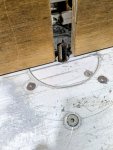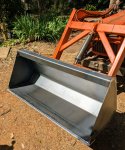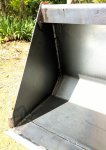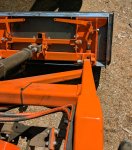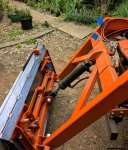Paul Allwood
Well-known member
Premium Member
Equipment
Kubota B7200HSTD, RC60-72H MMM, homemade FEL
I tried grinding a bevel on a piece of 100 x 10 mm mild steel that I'll weld on to the bucket for a cutting edge, but wasn't happy with how uneven it came out. Don't think it would have bothered the dirt but not sure if the tooth bar would have sat on snuggly, and I'd rather start with it straight.
The router table worked ok to clean up my dodgy grinding.

 youtube.com
youtube.com
The router table worked ok to clean up my dodgy grinding.

2 November 2025
Enjoy the videos and music you love, upload original content, and share it all with friends, family, and the world on YouTube.
Attachments
-
554 KB Views: 54
-
779.3 KB Views: 61
-
601 KB Views: 54
-
523.5 KB Views: 52
-
453.8 KB Views: 53




